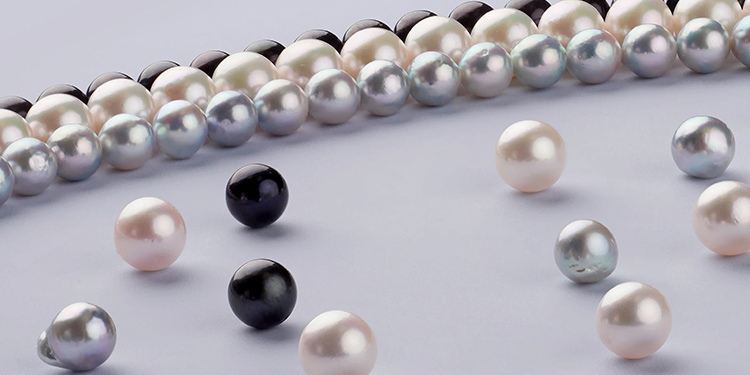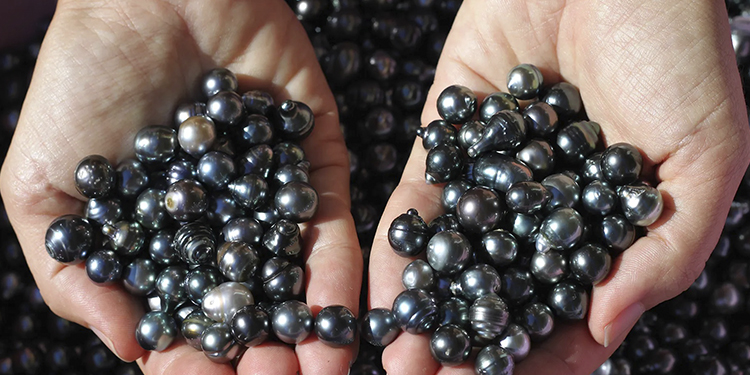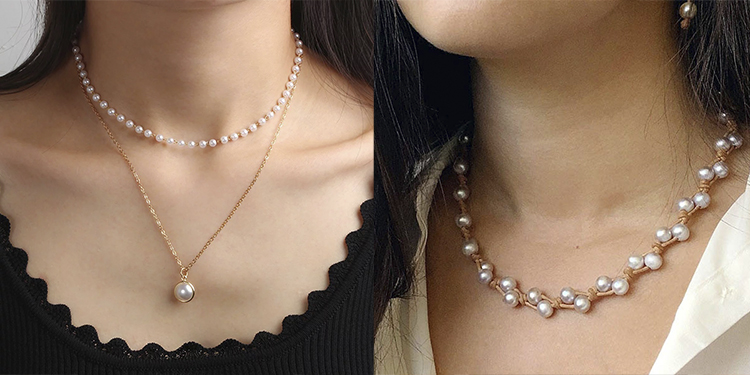How to Choose Pearl Colors for Different Skin Tones

Many individuals often find themselves in a quandary when selecting pearl necklaces or pearl earrings, fearing they may not be able to carry off certain colors effectively.
As such, acquiring knowledge about the colors of pearls and how to choose pearls that suit one's skin tone is an essential skill.
Today, we will introduce various pearl colors and their compatibility with different skin tones. Let's delve into this matter.
Common Pearl Colors
1. Akoya Pearls:
Often referred to as the "human light bulb" of pearls, Akoya pearls have gained considerable popularity among women in recent years.
They are characterized by sharp luster and are primarily white, often accompanied by overtones of pink, silver-blue, and other variations, including silver-gray, creamy yellow, and pale gold.

2. Australian South Sea Pearls:
As the cherished exemplar of the pearl world, Australian South Sea pearls possess a deep and luxurious luster.
They are predominantly white, with color tones that can range from slightly pink, greenish, or silvery-white, and overtones such as silver-blue and dusty rose.
Their signature silky sheen has garnered increasing admiration in recent years.
3. South Sea Golden Pearls:
Hailed as the "Pearl Queen," South Sea golden pearls exhibit a sheen akin to molten gold.
Their primary color is gold, with variations like light gold, rich gold (rare and costly), apricot-toned gold, gold-green, and tea gold.
4. Tahitian Black Pearls:
Despite the name "black pearls," Tahitian black pearls are not purely black.In fact, pure black Tahitian pearls are exceedingly rare.
These pearls display rich iridescence, with common colors including platinum gray, greenish-black, bluish-black, silver-gray, purple-black, and various shades within the brown spectrum.
Among these, peacock green is the most popular and also the most expensive.

5. Edison Pearls:
Freshwater pearls exhibit a rich range of colors, and Edison pearls, a type of freshwater pearl, come in various shades such as white, pink, koi fish colors, orange, purple-gold, and purple, among others.
Pearl Selection for Different Skin Tones
Yellow Skin Tone:
Suitable choices encompass white, creamy, pink, and gold pearls. White and creamy pearls are particularly flattering for those with yellow undertones in their skin. Pink pearls can also yield pleasing results.
Recommendation:
Creamy gold pearls! The iridescence of Akoya pearls or South Sea golden pearls can accentuate facial features for individuals with yellow skin tones.
Purple and black pearls are less suitable for yellow skin tones, as dark pearls may cause the complexion to appear sallow.
However, when paired with vibrant and colorful attire, black pearls can add a touch of personal elegance.

Fair Skin:
Nearly all colors are compatible! Individuals with fair skin enjoy considerable flexibility in choosing pearl colors.
White or creamy pearls impart a clean and elegant look, while pink and purple pearls can enhance the complexion, conveying a youthful appearance.
Recommendation:
Gold pearls exude luxury and are suitable for important occasions.
Peacock green-black pearls can elevate overall sophistication.

Tan and Dark Skin:
Ideal choices encompass white, light pink, and gold pearls.Consider white pearls with pink overtones or light pink Japanese Akoya pearls.
For those looking to brighten tan skin, gold South Sea pearls are an excellent choice.
Lastly, for individuals who remain uncertain, opting for small pearls around 4mm in size is a versatile and universally flattering option, irrespective of skin tone or occasion.


Leave a Comment